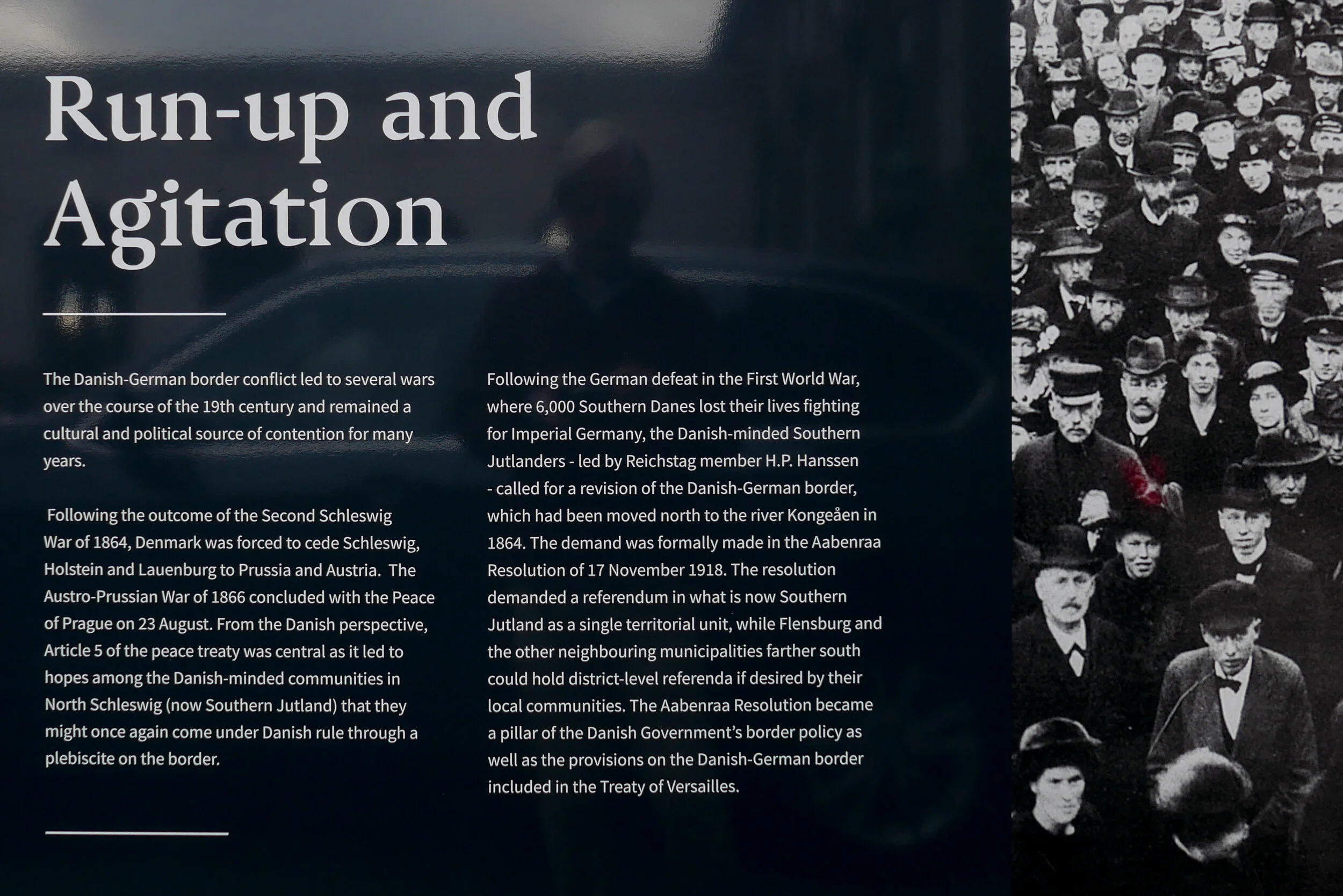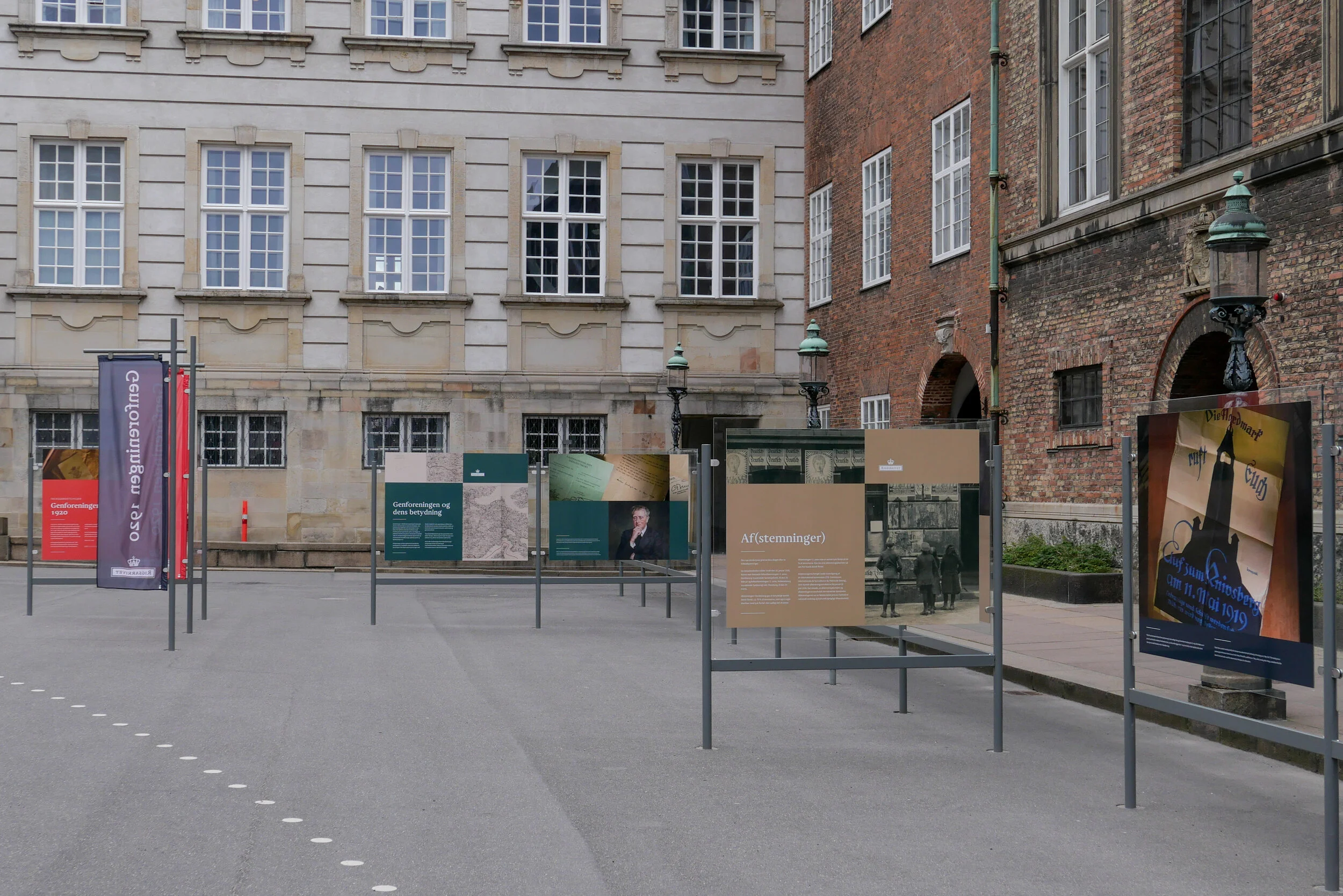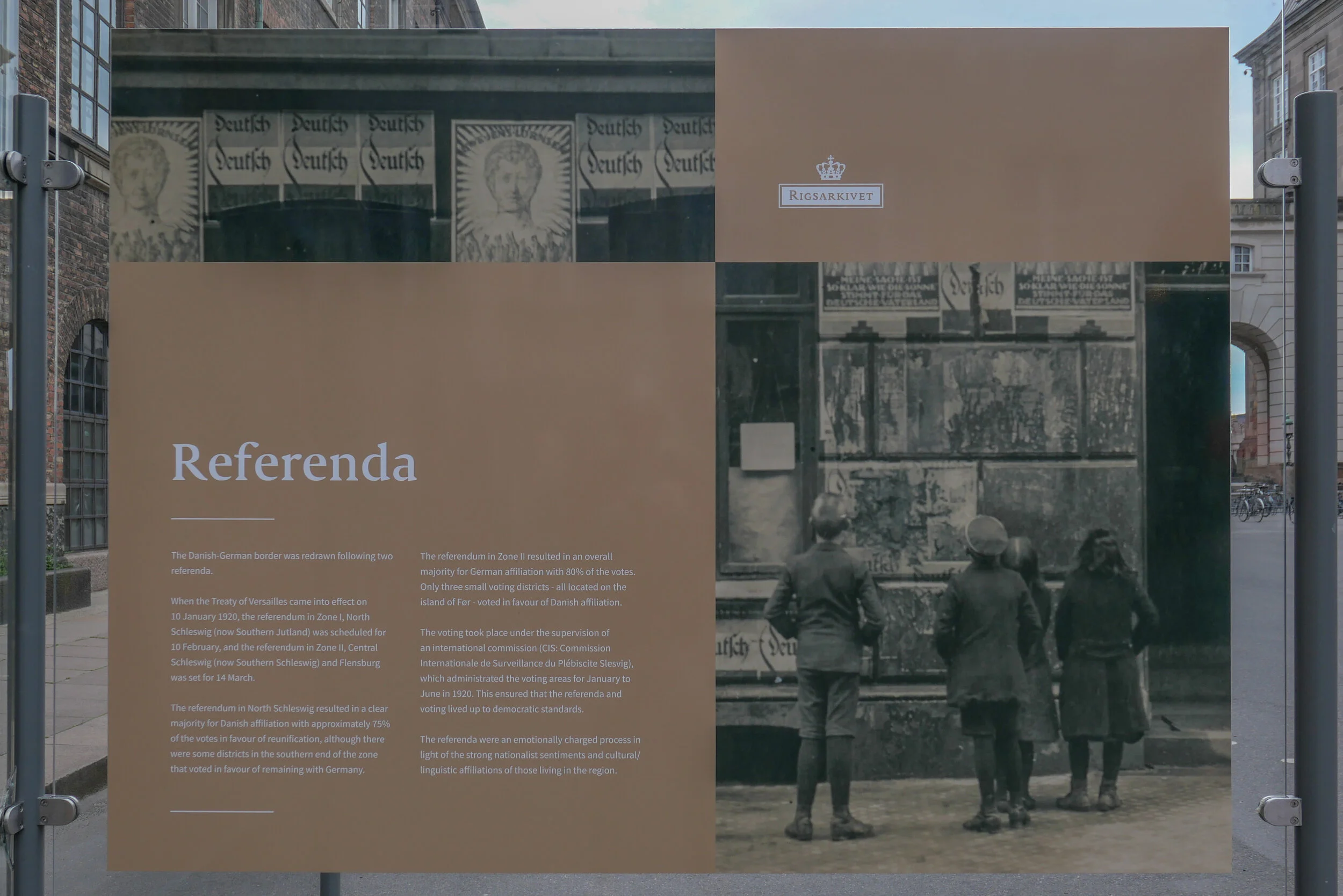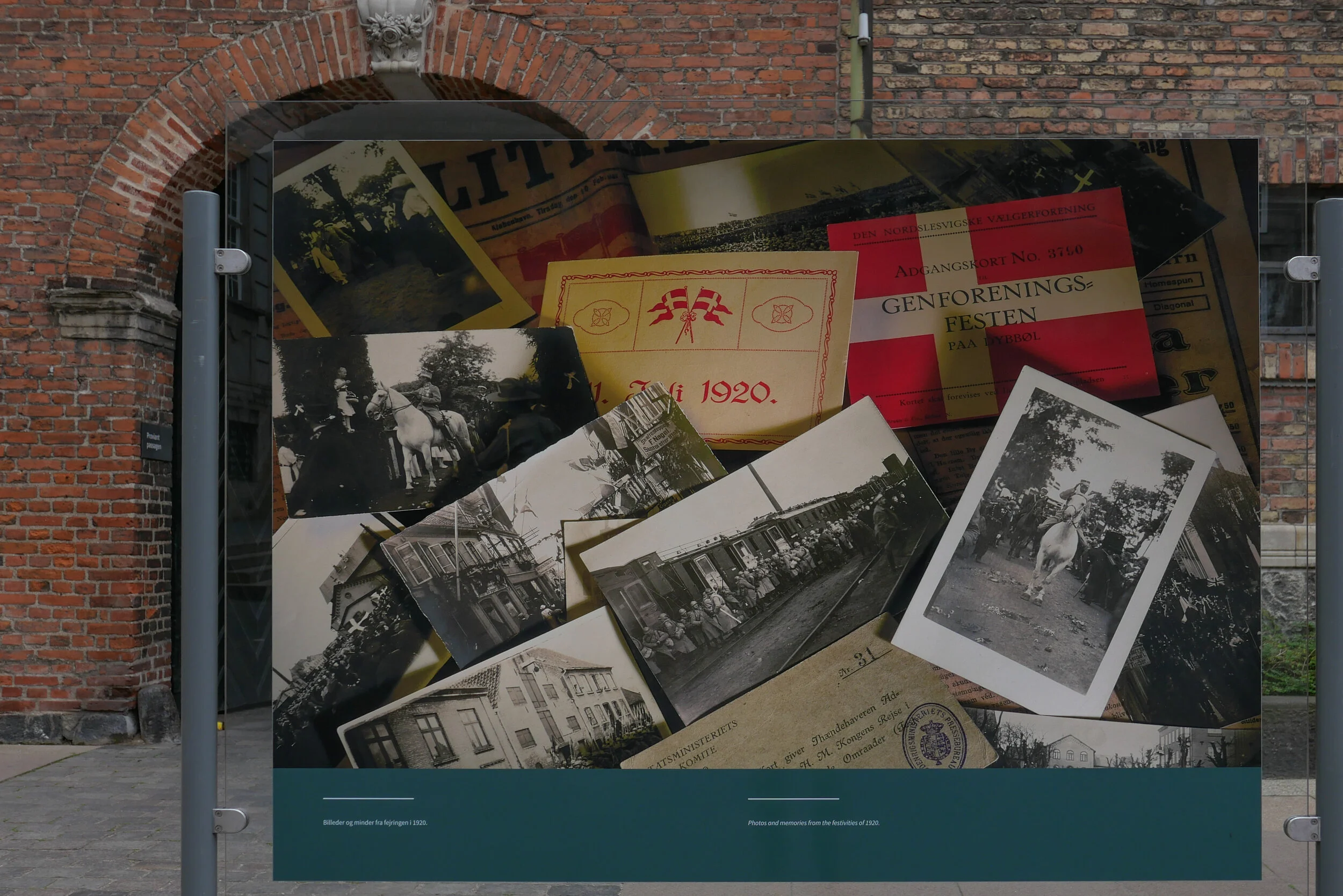Genforeningen / The Reunification of 1920
/to open full screen as a slide show, select any image
There is an exhibition in Rigsdagsgården - in the courtyard in front of parliament - to mark the anniversary of the reunification of Denmark in June and July 1920.
Photographs of documents and old maps and letters from the period come from the State Archive and there are contemporary images and photographs of newspaper articles along with short texts for explanation in Danish and the same screens are repeated but with an English text.
This was a crucial event in Danish history that explains much about the character and the politics of modern Denmark.
The Schleswig problem was caused by a potent and destructive mix of history, different inheritance laws, the fact that Holstein, Lauenburg and Schleswig were ostensibly independent duchies and that not only did many of the Danes in the area speak German as their first language but the whole thing was caught up in the rise and rise of an independent and then a unified Germany and with that the wider politics of alliances and the 'diplomacy' of other European states concerned with containing or allying with or opposing the different players for power and influence.
Schleswig was lost in the devastating war against Prussia and Austria in 1864 - the Second Schleswig War.
The outcome was devastating for Denmark because - in the key battle at Dybbøl Banke in April 1864 - 1,800 Danish soldiers were killed and 3,000 taken prisoner and, in the Peace Treaty of October 1864, Denmark was forced to renounce all claim to the duchies and, as a consequence, the country lost a third of its territory and 40% of its population.
With the defeat of Germany in 1918, at the Versailles Conference between January and June 1919, European powers negotiated peace and resolved an armistice, and, for Denmark, regaining control of at least some of the lost territory became a reality.
Rather than returning to historic land borders, it was agreed that there should be a referendum or plebiscite with three zones to allow for self determination.
The German-speaking areas of Holstein and Lauenburg in the south remained under German control and the north part of Schleswig chose, with 80% of the vote, to return to Denmark.
There had been some hope that Southern Schleswig - particularly the town of Flensburg with a large Danish-speaking minority - might either vote to return to Danish control or be placed under the League of Nations as a semi-autonomous territory but on 15 June 1920 a new border north of Flensburg was agreed and the formal date of the reunification was marked on 9th July 1920 when the Danish king, Christian X, signed the Act on the Inclusion of the Regions of Southern Jutland and at 9.20 a.m. on 10th July, on horseback, crossed the old border at Frederikshøj and entered the returned Danish territory.













































